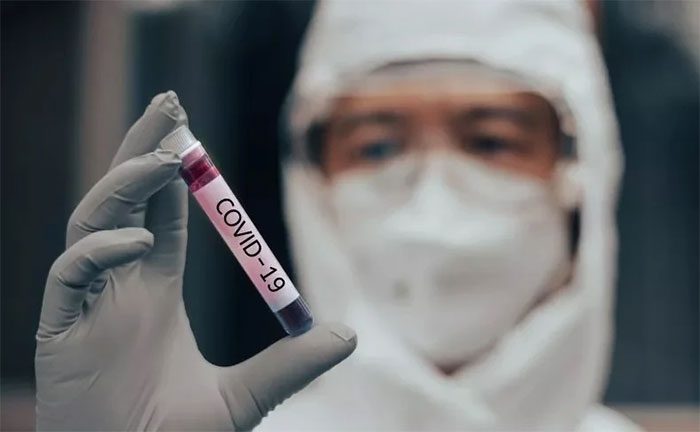A new study from the University of New South Wales, Australia, has reignited debates about the origins of the Covid-19 pandemic, concluding that the SARS-CoV-2 virus may have originated from a laboratory.
As the world enters the fifth year of facing Covid-19, the widely accepted hypotheses in the scientific community suggest that the pandemic-causing virus spread naturally from animal origins.
Studies have shown that SARS-CoV-2 shares up to 96% DNA similarity with coronaviruses found in bats, according to Newsweek.
Conversely, there are hypotheses related to the virus potentially leaking from a laboratory.
Laboratory Leak Theory

A scientist handling Covid-19 infected blood samples in a laboratory in Wuhan, China. (Photo: Newsweek).
In 2020, during the early stages of the Covid-19 pandemic, this hypothesis was supported by a segment of the scientific community. However, a collective statement published in the Lancet in February 2020 by 27 scientists condemned the “conspiracy theories suggesting Covid-19 has no natural origin.”
This topic has resurfaced recently as a new study from the University of New South Wales has presented hypotheses regarding the non-natural origins of SARS-CoV-2.
In a study published in the journal Risk Analysis on March 15, Chandini Raina MacIntyre, the study’s author, and her colleagues analyzed existing data on the virus’s origins using 11 criteria and a risk scoring algorithm to determine which hypothesis—natural or non-natural origin—was more likely.
The evaluation criteria included: biological risk, characteristics of the virus strain, geographical distribution, transmission rate, and transmission methods.
Using this method, the research team concluded that Covid-19 is more likely to have originated from a laboratory.
“While the natural origin of SARS-CoV-2 remains plausible, there is no basis to dismiss the hypothesis of a non-natural origin. The fact is that no host or intermediary has been identified as the source of transmission from animals to humans,” said Ms. MacIntyre.
Controversial Conclusions
Ms. MacIntyre’s study has also faced criticism. In their research, the authors reinforced their position by referring to the “furin cleavage site,” considered a unique characteristic of SARS-CoV-2 that facilitates the virus’s entry into human cells, and which has not been found in similar virus strains.
However, James Wood, co-chair of the Cambridge Interdisciplinary Research Centre for Infectious Diseases in the UK, stated that instances of furin cleavage sites have been documented in other viruses, not just SARS-CoV-2.
Mr. Wood argued that the study employed unverified methods and contained fundamental errors.
“This is a misleading, low-quality study with no basis for its conclusions,” he said.
In the scoring criteria, the authors also noted the lack of positive SARS-CoV-2 samples from animals at the Huanan Seafood Market in Wuhan, despite it being the outbreak point in the early stages of the pandemic.
From this, the team suggested that positive samples of the virus originated from human cases.
Alice Hughes, an associate professor of biological sciences at the University of Hong Kong, argued that no live animal samples were collected until after the outbreak began, and many animals may have been culled, resulting in very few live animals being sampled.
Ms. MacIntyre acknowledged the subjective points of the study, mentioning that two independent researchers used algorithms to score the likelihood of virus origins. However, this method is not widely accepted.
“This is difficult to regard as research; it is primarily subjective opinions rather than science. It almost disregards all existing evidence. The approach of scoring subjectively across 11 criteria holds little significance regarding the origins of Covid-19. Another group could yield different results,” said David Robertson, a virology professor at the University of Glasgow, UK.
Mr. Robertson noted that speculative and subjective studies could be counterproductive, creating misleading information that fosters skepticism about the natural origins of SARS-CoV-2.
The Wall Street Journal reported in March 2023 details of a classified report from the U.S. Department of Energy, suggesting the virus might have originated from a laboratory leak in Wuhan.
However, the department assessed the information as “low confidence,” while the Federal Bureau of Investigation (FBI) regarded the information as having “medium confidence.”


















































